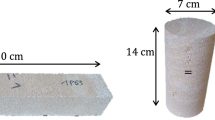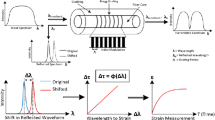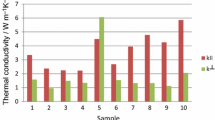Abstract
Structural well-bore integrity is an important issue for sustainable provision of geothermal energy. Raman scattering based fibre optic distributed temperature sensing (DTS) can help to monitor the status of a well and therefore help to optimize expensive work-over activities. This study reports on the installation of a fibre-optic cable in the cemented annulus behind the anchor casing in the high temperature geothermal well HE-53, Hellisheiði geothermal field, SW Iceland. Although the cable has been damaged during the installation, temperature data could be acquired during the entire length of installation down to 261.3 m. Temperature measurements were performed during the installation in spring 2009, during the onset of a flow test in summer 2009 and after a 8.5 month shut-in period in summer 2010. During the flow test, maximum temperatures of 230 °C were measured after 2 weeks fluid production. Using optical time domain reflectometry (OTDR), attenuation measurements at 850 and 1,300 nm enabled to identify mechanical, thermal, and chemical degradation along the optical fibre. The observed degradation led to erroneous temperature readings and limits, due to the optical budget of the DTS system, the accessible length of the fibre. The characteristics and the influence of the different degradation mechanisms on the accuracy of the DTS measurements are discussed and recommendations for an optimized installation are given.







Similar content being viewed by others
Notes
For the second logging campaign, the beginning of the DTS logging is used as reference time; h DTS
References
Albertsson A, Bjarnason JO, Gunnarsson T, Ballazus C, Ingason K (2003) Part III: Fluid handling and evaluation. In: Fridleifsson GO (ed) Iceland deep drilling project, Feasibility Report, Orkustofnun Report OS-2003-007, p 33
Aminossadati SM, Mohammed NM, Shemshad J (2010) Distributed temperature measurements using optical fibre technology in an underground mine environment. Tunn Undergr Space Technol 25(3):220–229. doi:10.1016/j.tust.2009.11.006
Arnórsson S (1995) Geothermal systems in Iceland; structure and conceptual models; I, High-temperature areas. Geothermics 24:561–602. doi:10.1016/0375-6505(95)00025-9
Bignall G (2010) Hotter and deeper: New zealand’s research programme to harness its deep geothermal resources. In: Proceedings world geothermal congress 2010, Bali, Indonesia
Buck JA (2004) Fundamentals of Optical Fibers. John Wiley & Sons, Inc., Hoboken, New Jersey
Cella JA (1996) Degradation and stability of polyimides. In: Ghosh MK, Mittal KL (eds) Polyimides: fundamentals and applications, Marcel Dekker, Inc., New York, pp 343–366
Dowdle W, Cobb W (1975) Static formation temperature from well logs—an empirical method. J Petrol Technol 27(11):1326–1330. doi:10.2118/5036-PA
Driesner T, Heinrich CA (2007) Correlation formulae for phase relations in temperature-pressure-composition space from 0 to 1000°C, 0 to 5000bar, and 0 to 1 XNaCl. Geochim Cosmochim Acta 71(20):4880–4901. doi:10.1016/j.gca.2006.01.033
Förster A, Schrötter J, Merriam DF, Blackwell DD (1997) Application of optical-fiber temperature logging—an example in a sedimentary environment. Geophysics 62(4):1107–1113. doi:10.1190/1.1444211
Francke H, Kraume M, Saadat A (2012) Thermal-hydraulic measurements and modelling of the brine circuit in a geothermal well. Environ Earth Sci (Special Issue: Geoenergy)
Franzson H, Kristjánsson BR, Gunnarsson G, Björnsson G, Hjartarson A, Steingrímsson B, Gunnlaugsson E, Gíslason G (2005) The Hengill-Hellisheiði geothermal field. Development of a conceptual geothermal model. In: Proceedings world geothermal congress 2005, Antalya, Turkey
Freifeld BM, Finsterle S, Onstott TC, Toole P, Pratt LM (2008) Ground surface temperature reconstructions: Using in situ estimates for thermal conductivity acquired with a fiber-optic distributed thermal perturbation sensor. Geophys Res Lett 35(14):L14,309. doi:10.1029/2008GL034762
Fridleifsson GO, Elders WA (2005) The Iceland Deep Drilling Project: a search for deep unconventional geothermal resources. Geothermics 34:269–285. doi:10.1016/j.geothermics.2004.11.004
Geckeis O, Nolden W, Henninges J, Zimmer M, Reinsch T (2011) Verfahren zum Betreiben eines Bohrlochkabels und Bohrlochkabel. German Patent DE102008026082B8
van de Giesen N, Steele-Dunne SC, Jansen J, Hoes O, Hausner MB, Tyler S, Selker J (2012) Double-ended calibration of fiber-optic raman spectra distributed temperature sensing data. Sensors 12(5):5471–5485. doi:10.3390/s120505471. http://www.mdpi.com/1424-8220/12/5/5471
Grattan KTV, Meggitt BT (1995) Optical Fiber Sensor Technology. Chapman & Hall, London
Günzel U, Wilhelm H (2000) Estimation of the in-situ thermal resistance of a borehole using the distributed temperature sensing (DTS) technique and the temperature recovery method (TRM). Geothermics 29(6):689–700. doi:10.1016/S0375-6505(00)00028-6
Hartog A (1983) A distributed temperature sensor based on liquid-core optical fibers. J Lightwave Technol 1(3):498–509. doi:10.1109/JLT.1983.1072146
Henninges J (2005) Thermal properties of gas-hydrate-bearing sediments and effects of phase transitions on the transport of heat deduced from temperature logging at mallik, NWT, Canada. PhD thesis, Technical University Berlin
Henninges J, Huenges E, Burkhardt H (2005) In situ thermal conductivity of gas-hydrate-bearing sediments of the Mallik 5L-38 well. J Geophys Res (Solid Earth) 110:B11,206. doi:10.1029/2005JB003734
Henninges J, Zimmermann G, Büttner G, Schrötter J, Erbas K, Huenges E (2005b) Wireline distributed temperature measurements and permanent installations behind casing. In: World geothermal congress, Antalya, Turkey, 1021
Humbach O, Fabian H, Grzesik U, Haken U, Heitmann W (1996) Analysis of OH absorption bands in synthetic silica. J Non-Cryst Solids 203:19–26. doi:10.1016/0022-3093(96)00329-8
Hurtig E, Grosswig S, Jobmann M, Kuhn K, Marschall P (1994) Fiber-optic temperature measurements in shallow boreholes: experimental application for fluid logging. Geothermics 23(4):355–364. doi:10.1016/0375-6505(94)90030-2
Ikushima AJ, Fujiwara T, Saito K (2000) Silica glass: A material for photonics. J Appl Phys 88(3):1201–1213. doi:10.1063/1.373805
Johnson D, Sugianto R, Mock P, Jones C (2004) Identification of steam-breakthrough intervals with DTS technology. SPE Prod Facil 19:41–48. doi:10.2118/87631-PA
Kaura J, Sierra J (2008) High-temperature fibers provide continuous DTS data in a harsh SAGD environment. World Oil Gas J 229(6):47–53
Lee CE (2007) FIBER-OPTIC SENSING: Self-calibrating technique enables long-distance temperature sensing. Laser Focus World 43(8)
Lemaire PJ, Lindholm EA (2007) Hermetic optical fibers: Carbon-coated fibers. In: Méndez A, Morse TF (eds) Specialty optical fibers handbook, chap 14. Academic Press, pp 453–490
Lemmon EW, Huber ML, McLinden MO (2007) NIST standard reference database 23: reference fluid thermodynamic and transport properties-REFPROP, Version 8.0. National Institute of Standards and Technology, Gaithersburg
Lingle Jr R, Peckham DW, McCurdy A, Kim J (2007) Light-guiding fundamentals and fiber design. In: Méndez A, Morse TF (eds) Specialty optical fibers handbook, chap 2. Academic Press, pp 19–68
Níelsson S, Franzson H (2010) Geology and hydrothermal alteration of the Hverahlid HT-system, SW-Iceland. In: Proceedings world geothermal congress 2010, Bali, Indonesia
Normann R, Weiss J, Krumhansl J (2001) Development of fibre optic cables for permanent geothermal wellbore deployment. In: Twenty-sixth workshop on geothermal reservoir engineering, Stanford University, Stanford, California, SGP-TR-168
Nowak T (1953) The estimation of water injection profiles from temperature surveys. Pet Trans AIME 198:203–212
Pimenov V, Brown G, Tertychnyi V, Shandrygi A, Popov Y (2005) Injectivity profiling in horizontal wells via distributed temperature monitoring. In: SPE Annual technical conference and exhibition, 9–12 October 2005, Dallas, TX, USA
Prevedel B, Wohlgemuth L, Henninges J, Krüger K, Norden B, Förster A, the CO2SINK Drilling Group (2008) The CO2SINK boreholes for geological storage testing. Sci Drill 6:32-37. doi:10.2204/iodp.sd.6.04.2008
Reinsch T (2012) Structural integrity monitoring in a hot geothermal well using fibre optic distributed temperature sensing. PhD thesis, Clausthal University of Technology
Reinsch T, Henninges J (2010) Temperature-dependent characterization of optical fibres for distributed temperature sensing in hot geothermal wells. Measure Sci Technol 21(9):094,022. doi:10.1088/0957-0233/21/9/094022
Reinsch T, Henninges J (2012) Fibre optic distributed temperature sensing-data from geothermal well HE-53, Hellisheidi geothermal field, SW Iceland. Technical Report STR 1212, Helmholtz Centre Potsdam GFZ German Research Centre for Geosciences. doi:10.2312/GFZ.b103-12128
Saadat A, Frick S, Kranz S, Regenspurg S (2010) Energetic use of EGS reservoirs. In: Huenges E (ed) Geothermal energy system—exploration, development, and utilization, chap 6. Wiley, New York, pp 303–372
Saemundsson K (1995) Hengill, geological map (bedrock) 1:50000. Orkustofnun, Hitaveita Reykjavíkur and Landmaelingar íslands
Sigfusson B, Gunnarsson I (2011) Scaling prevention experiments in the hellisheiði power plant, Iceland. In: Proceedings, thirty-sixth workshop on geothermal reservoir engineering, Stanford University, Stanford, California, SGP-TR-191
Sims R, Schock R, Adegbululgbe A, Fenhann J, Konstantinaviciute I, Moomaw W, Nimir H, Schlamadinger B, Torres-Martínez J, Turner C, Uchiyama Y, Vuori S, Wamukonya N, Zhang X (2007) Energy supply. In: Metz B, Davidson OR, Bosch PR, Dave R, Meyer LA (eds) Climate change 2007: mitigation. Contribution of working group III to the fourth assessment report of the intergovernmental panel on climate change. Cambridge University Press, Cambridge, UK and New York, NY, USA, pp 251–322
Smithpeter C, Normann R, Krumhansl J, Benoit D, Thompson S (1999) Evaluation of a distributed fiber-optic temperature sensor for logging wellbore temperature at the beowawe and dixie valley geothermal fields. In: Twenty-fourth workshop on geothermal reservoir engineering. Stanford University, Stanford, CA, USA, SGP-TR-162
Stefánsson V, Steingrímsson B (1980) Geothermal logging I—an introduction to techniques and interpretation. Technical Report OS80017/JHD09, Orkustofnun
Stolov AA, Simoff DA, Li J (2008) Thermal stability of specialty optical fibers. J Lightwave Technol 26(20):3443–3451. doi:10.1109/JLT.2008.925698
Stone J, Walrafen GE (1982) Overtone vibrations of OH groups in fused silica optical fibers. J Chem Phys 76(4):1712–1722. doi:10.1063/1.443210
Suh K, Lee C (2008) Auto-correction method for differential attenuation in a fiber-optic distributed-temperature sensor. Optic Lett 33(16):1845–1847
Tanimola F, Hill D (2009) Distributed fibre optic sensors for pipeline protection. J Nat Gas Sci Eng 1(45):134–143. doi:10.1016/j.jngse.2009.08.002
Thorhallsson S (2003) Geothermal well operation and maintenance. IGC2003 Short Course, Geothermal Training Programme, The United Nations University, Iceland, pp 195–217. http://www.os.is/gogn/flytja/JHS-Skjol/IGC2003ShortCourse/13Sverrir.pdf
Thorhallsson S (2008) Geothermal drilling and well pumps. In: Workshop for decision makers on direct heating use of geothermal resources in Asia, organized by UNU-GTP, TBLRREM and TBGMED, Tianjin, pp 11–18. http://www.os.is/gogn/unu-gtp-sc/UNU-GTP-SC-06-42.pdf
Williams GR, Brown G, Hawthorne W, Hartog AH, Waite PC (2000) Distributed temperature sensing (DTS) to characterize the performance of producing oil wells. In: Wang A, Udd E (eds) Proceedings of SPIE, vol 4202, pp 39–54. doi:10.1117/12.411726
Zhou Z, He J, Huang M, He J, Chen G (2010) Casing pipe damage detection with optical fiber sensors: a case study in oilwell constructions. Adv Civil Eng 2010:9. doi:10.1155/2010/638967
Acknowledgments
This work was performed within the framework of the HITI project (http://www.hiti-fp6.eu/), funded by the European Commission in the 6th Framework Programme, Proposal/Contract no.: 019913 and the GeoEn (Phase 2) project and funded by the Federal Ministry of Education and Research (BMBF, 03G0767A). The authors would like to thank J. Schrötter, C. Cunow and M. Poser for their help during planning, installation and data acquisition as well as nkt cables GmbH for the cooperation in developing of a new cable design and providing a cable. Furthermore, the authors are grateful to Sigvaldi Thordarson and the staff from ISOR (Iceland GeoSurvey) for the coordination of the field work and the support during the measurement campaigns, Reykjavik Energy for providing a well for installation as well as Mannvit and Iceland Drilling for the support during installation and measurements.
Author information
Authors and Affiliations
Corresponding author
Rights and permissions
About this article
Cite this article
Reinsch, T., Henninges, J. & Ásmundsson, R. Thermal, mechanical and chemical influences on the performance of optical fibres for distributed temperature sensing in a hot geothermal well. Environ Earth Sci 70, 3465–3480 (2013). https://doi.org/10.1007/s12665-013-2248-8
Received:
Accepted:
Published:
Issue Date:
DOI: https://doi.org/10.1007/s12665-013-2248-8




